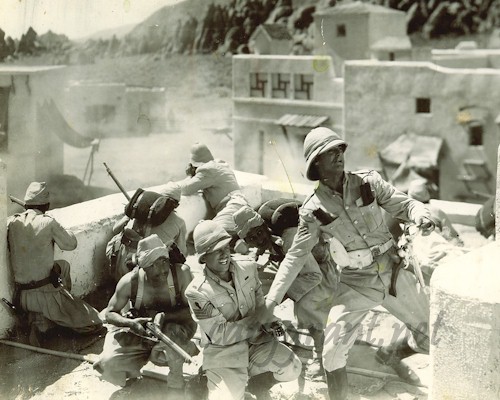
This year marks the 70th anniversary of Hollywood’s greatest year, 1939.
Accordingly, Turner Classic Movies is celebrating the anniversary this month by showing 39 films released in ’39, beginning tonight with a showing of The Wizard of Oz at 8 EDT, followed by a new documentary, 1939: Hollywood’s Greatest Year.
It’s a truism among fans of classic movies that 1939 was the Hollywood cinema’s greatest year. But if it has become something of a cliche to say so, it’s only because it’s so undeniably true.
It’s really rather amazing to consider how many classic or transcendentally classic films were released during that annus mirabilis. Among the most highly praised then and in the ensuring years were the following:
- Gone with the Wind
- The Wizard of Oz
- Stagecoach
- Beau Geste
- Goodbye, Mr. Chips
- Gunga Din
- The Women
- Wuthering Heights
- The Roaring Twenties
- Love Affair
Those would be enough for a great year in itself, but there was so much more–such as Ninotchka, Only Angels Have Wings, Drums Along the Mohawk, Mr. Smith Goes to Washington, The Hunchback of Notre Dame, Allegheny Uprising, The Adventures of Sherlock Holmes, The Hound of the Baskervilles, Stanley and Livingston, The Man in the Iron Mask, Dark Victory, Of Mice and Men,Young Mr. Lincoln, The Rains Came, Midnight, The Private Lives of Elizabeth and Essex, Union Pacific, Babes in Arms, The Little Princess, Another Thin Man, The Story of Vernon and Irene Castle, The Hardys Ride High, Golden Boy, Dodge City, Gulliver’s Travels, The Light That Failed, The Adventures of Huckleberry Finn, The Old Maid, Son of Frankenstein, Destry Rides Again, and many, many others of like quality.
And from overseas: The Rules of the Game, The Four Feathers, The Stars Look Down, The Story of the Last Chrysanthemums, and others.
And perhaps even more impressive is the high quality of even the year’s lower-budget films, such as Code of the Secret Service and Secret Service of the Air, both starring Ronald Reagan.
What all the Hollywood films mentioned here shared was the industry’s ability at the time to alternate scenes of grandeur and intimacy with consummate skill and confidence.
The Hollywood movie factories had been perfected by the mid-1930s, and the studios were amazingly adept at turning out greatly entertaining movies that reflected and reinforced the values of their audience. Although the stars and other filmmaking principals were paid amazing sums of money then as they are now, the industry did not then reflect the elitism now rampant in Hollywood.
The studio moguls, who were largely self-made and from humble origins, enthusiastically accepted the nation’s founding values and made sure that their product reflected those notions.They did so both for patriotic reasons and because they knew that was the best way for them to make money.
Thus while MGM head Louis B. Mayer was a staunch Republican and the Warner Bros. were supporters of FDR, all shared a strong patriotic love for their nation and shared their audience’s values.
Also important was the more conservative social values that arose during the Depression 1930s after the social excesses of the Roaring Twenties. Audiences preferred movies to reflect values such as personal responsibility, long-term thinking, the value of hard work, personal sacrifice for the good of others, modesty, and the like. Hollywood was voluntarily under the authority of the Production Code, which set moral standards for the industry and protected the studios from a race to the moral bottom and an unbridled pursuit of sensationalism.
The Production Code was clearly not a straitjacket on creativity, given the impressive films made while it was in place during the 1930s through the 1950s. Contrary to the claims of many critics (and the Wikipedia entry cited here), the Production Code Administration was willing and in fact eager to work with producers to ensure that films could be as creative as possible without undermining the nation’s morals.
Refraining from undermining people’s morals may seem rather a quaint notion to many people today, but it indicates a sense of honor, decency, and humility that is sorely lacking among all to many purveyors of cultural products today.
Of course, there’s no sense in hoping for a return of the Production Code, but a greater sense of responsibility on filmmakers’ part would certainly be welcome. It would benefit the movies both morally and esthetically.
